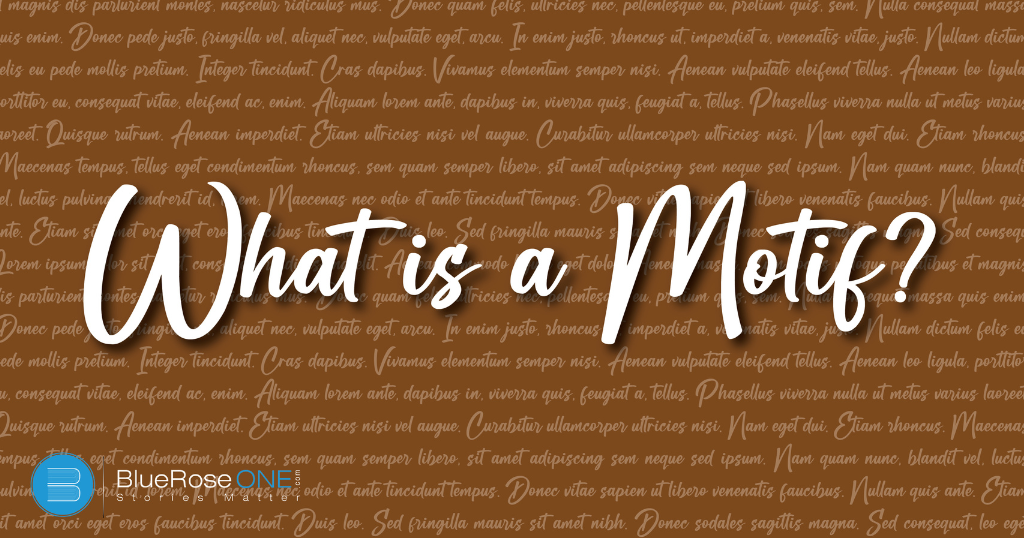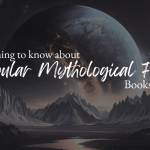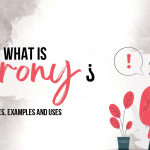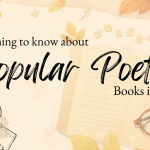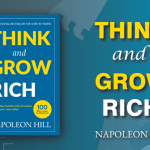In the world of stories and books, there’s something special called a “motif.” It’s like a magical ingredient that adds meaning and beauty to the tale. Imagine it as a dance, where this special element keeps popping up, making the story richer and more interesting. In our adventure today, we’re going to explore what motifs are all about.
Think of it as a journey where every time something repeats in a story, it’s like a secret code or a lovely tune that makes everything more special. Come along as we discover the simple yet fascinating world of motifs in literature – the hidden gems that make stories come alive.
You may also like: How to Write an Author Bio | BlueRoseOne.com
Defining Motif in Literature
In literature, a motif is like a special pattern or theme that repeats in a story. The word “motif” comes from French and means a pattern or theme. Unlike big ideas called themes, motifs are specific details, concepts, or structures that show up over and over again in a literary work, adding layers of meaning.
Picture a motif as a repeated melody in a song. Each time you hear it, it brings something new to the music. Similarly, in stories, a motif is a particular element or image that keeps coming back, changing and growing as the plot unfolds. It’s like a special ingredient that authors use to give their work a unique and recognizable flavor.
Take the example of a rose as a motif in a story. At first, it might mean love and beauty. But as the story goes on, the same rose could start to symbolize different things – maybe showing how relationships are fragile or how time passes. This changing nature of motifs makes them different from fixed themes. Writers use motifs to add intricate symbols to their stories, connecting with readers on a deeper level.
Motifs act like building blocks in a story, connecting different parts together. They link characters, events, and feelings, creating a solid narrative. By repeating and changing, motifs become a kind of secret language within the story. They can communicate complex ideas and emotions without directly saying them.
In simple terms, motifs are like tools for storytellers. They help make a tale more than just about the surface-level plot and characters. They are like secret codes that, when you understand them, reveal hidden meanings and deep layers in literature. As we explore motifs, we’re uncovering the special craft that writers use to turn words into immersive and meaningful stories.
You may also read: 5 Act Structure: Definition, Examples and More
Key Characteristics of Motifs:
- Repetition: Motifs are characterized by their repetition, appearing multiple times throughout a story. This recurrence can take various forms, like a specific image, symbol, phrase, or event. For instance, in F. Scott Fitzgerald’s “The Great Gatsby,” the motif of the green light is repeated, symbolizing Gatsby’s unattainable dreams. Each appearance reinforces its significance, creating a pattern that deepens the narrative.
- Symbolic Significance: Motifs carry symbolic weight, representing deeper meanings or thematic elements. In Nathaniel Hawthorne’s “The Scarlet Letter,” the scarlet letter itself is a motif symbolizing sin and societal judgment. Its repeated presence not only emphasizes Hester Prynne’s struggles but also contributes to the broader exploration of morality in the narrative.
- Contribution to Themes: Motifs play a crucial role in developing and reinforcing broader themes within a literary work. In William Shakespeare’s “Macbeth,” the motif of blood is recurrent and symbolizes guilt and the consequences of unchecked ambition. This motimeif contributes to the overarching themes of moral decay and the destructive nature of power, enriching the reader’s understanding of the play’s central ideas.
You may also like: 7 Top Rated Self Help Books of All time in 2024
Exploring the Meaning of Motifs:
- Symbolism and Representation: Motifs serve as powerful vessels of symbolism, encapsulating abstract concepts within tangible and recurring images. In F. Scott Fitzgerald’s “The Great Gatsby,” the green light at the end of Daisy’s dock acts as a poignant motif. This green light symbolizes Gatsby’s unattainable American Dream, representing his aspirations and the elusive nature of his desires. Its recurrence throughout the novel reinforces the profound symbolic significance attached to the green light, creating a nuanced layer of meaning that extends beyond the literal.
- Thematic Reinforcement: Motifs play a pivotal role in reinforcing and amplifying central themes within a literary work. In Shakespeare’s “Macbeth,” the motif of blood is pervasive and multifaceted. Beyond its literal representation, the motif symbolizes guilt, violence, and the consequences of unchecked ambition. Each instance of bloodshed, from Duncan’s murder to Lady Macbeth’s infamous handwashing scene, reinforces the overarching themes of moral degradation and the destructive impact of unbridled ambition. The motif becomes a thematic anchor, weaving its symbolic resonance into the broader narrative tapestry.
- Emotional Resonance: Through the repetition of specific motifs associated with emotions or moods, authors craft a consistent emotional resonance throughout the narrative. For instance, in Charlotte Brontë’s “Jane Eyre,” the motif of fire is recurrent. This motif is linked to Jane’s passionate and resilient nature. As fire symbolizes both warmth and destruction, its repetition amplifies the emotional intensity of Jane’s journey, creating a thematic connection between her inner turmoil and the recurring motif of fire. The emotional resonance established through such motifs enhances the reader’s engagement and empathy with the characters and their experiences.
You may also like: Publish your book with Amazon Self-Publishing in 2024
Examples of Motifs in Literature
- Water Imagery in “The Old Man and the Sea”: Hemingway’s novella masterfully employs the motif of water to convey profound symbolism. The sea, in its vast expanse, becomes a metaphor for life’s journey. Santiago’s fishing expedition mirrors the human struggle for survival, endurance, and resilience. The relentless ebb and flow of the ocean parallel Santiago’s internal conflicts and his unwavering determination in the face of adversity. The motif of water, with its dual nature as a life-sustaining force and a formidable challenge, encapsulates the novella’s themes of existentialism and the indomitable spirit of the human experience.
- The Journey Motif in “The Odyssey”: Homer’s epic poem, “The Odyssey,” centers around the enduring motif of the hero’s journey. Odysseus’ quest to return home becomes a timeless exploration of personal growth, challenges, and triumphs. The journey motif unfolds through various adventures, each contributing to Odysseus’ transformation. From facing mythical creatures to navigating the treacherous sea, Odysseus’ odyssey mirrors the universal human experience of self-discovery and perseverance. The motif serves as a narrative structure, guiding readers through the hero’s transformative journey and reinforcing the epic’s overarching theme of the hero’s quest for identity and homecoming.
- The “Mockingjay” in “The Hunger Games”: Suzanne Collins integrates the motif of the mockingjay as a powerful symbol in her dystopian trilogy, “The Hunger Games.” Initially associated with rebellion, the mockingjay evolves in significance throughout the narrative. From being a mere emblem of defiance, it becomes a catalyst for revolution. The motif represents the resilience of the oppressed against a tyrannical regime. As Katniss Everdeen embraces the mockingjay symbol, it becomes a unifying force for the districts, fostering a spirit of rebellion against the Capitol’s oppression. The motif’s evolution underscores the trilogy’s exploration of power dynamics, resistance, and the impact of symbols on collective consciousness.
You may also like: List of 10 Best Libraries in Portsmouth for Book Lovers
You may also read: Left Behind Series Books in Order: Where to Begin
The Evolution of Motifs
- Dynamic Transformation: Motifs showcase a dynamic nature, undergoing transformations that parallel the characters’ development and the narrative’s progression. In J.K. Rowling’s “Harry Potter” series, the motif of the phoenix undergoes dynamic transformation. Initially introduced as a symbol of Dumbledore’s wisdom and protection, the motif evolves as Harry faces challenges. The phoenix’s reappearance during critical moments, such as Dumbledore’s death and the Battle of Hogwarts, signifies not only resilience but also the cyclical nature of life and rebirth. This dynamic transformation of the phoenix motif mirrors Harry’s journey, adding layers of meaning and emotional depth to the narrative.
- Cultural and Historical Context: Motifs in literature can be deeply influenced by the cultural and historical context of the time. In Chinua Achebe’s “Things Fall Apart,” the motif of the yam holds cultural significance in Igbo society. The yam represents wealth, masculinity, and social status. Its recurrence throughout the novel reflects the cultural values and norms of the Igbo people. Understanding the historical context allows readers to appreciate the layered meanings attached to the yam motif, enriching their interpretation of the narrative and its exploration of cultural identity.
- Interconnected Motifs: Some narratives feature interconnected motifs, creating a web of symbolism that enhances the complexity of the story. In Gabriel García Márquez’s “One Hundred Years of Solitude,” the motifs of solitude, yellow, and butterflies are interconnected. Solitude is represented by the isolated town of Macondo, while the color yellow and butterflies appear during pivotal moments. The interplay between these motifs creates a rich tapestry of symbolism, with solitude representing the town’s destiny, yellow symbolizing the passage of time, and butterflies embodying the cyclical nature of life and death. The interconnected motifs contribute to the novel’s allegorical depth, inviting readers to unravel the intricate relationships between these recurring elements.
You may also like: How to Avoid Plagiarism in Assignment: 10 Easy Steps
In the vast landscape of literature, motifs emerge as intricate threads that connect the fabric of storytelling. Through their repetition, symbolic significance, and contribution to overarching themes, motifs enrich the reader’s experience and offer a nuanced understanding of complex narratives.
As we journey through the pages of diverse literary works, the motifs we encounter serve as guiding lights, inviting us to unravel the profound meanings woven into the tapestry of human expression.
Publish your book with BlueRoseONE and become a bestselling author. Don’t let your dream of becoming an author fade away, grab the opportunity now and publish your book – be it fiction, non fiction, poetry or more.
You may also read: How to Create Suspense in your Story: A Beginner’s Guide

